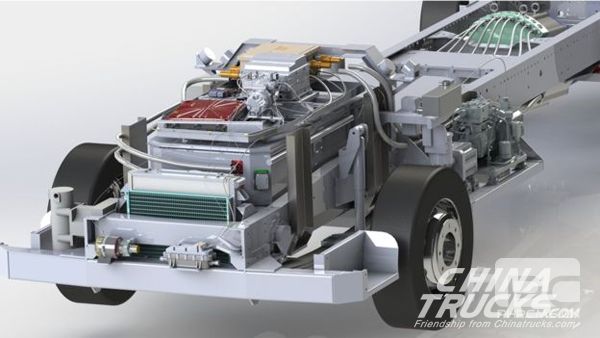Electric Trucks and Vans Cut Pollution Faster Than Cars
Date:2017-08-01 Source:www.chinsapv.com
www.chinaspv.com: The clock may be ticking for petrol and diesel-powered cars, but it's vans, trucks and buses that are driving the electric vehicle revolution on the world's roads.
 Kings Transport in Melbourne now has an all-electric fleet
Kings Transport in Melbourne now has an all-electric fleet
This week the UK government followed France in announcing it would ban the sale of such vehicles by 2040, while the mayors of Paris, Madrid, Mexico City and Athens plan to banish diesels from their city centres by 2025.
Almost all car makers now offer hybrid cars and many sell fully electric vehicles.
But the electric charge also extends to vans and trucks, and the need to switch to cleaner engines is even greater given that these larger vehicles are far bigger polluters than cars.
"In Europe, less than 5% of vehicles are commercial vehicles or heavy duty trucks, but they contribute to almost 20% of greenhouse gas emissions," says Ananth Srinivasan, mobility expert with research consultancy Frost & Sullivan.

SEA's platform can be used for a variety of electric commercial vehicles
Even in a country with wide open spaces like Australia, the electric wave is rolling out.
Melbourne-based logistics firm Kings Transport recently bought nine electric vans and light trucks from SEA Automotive. SEA chief executive Tony Fairweather says his firm realised a few years ago that electric commercial vehicles were becoming economically viable much faster than predicted.
"The components are cheaper every time we go to buy," he explains. "There's not many industries where that happens."
Beyond Australia, electric commercial vehicles are becoming an increasingly common sight.
In Germany, for example, Deutsche Post has started building its own electric vans and will soon start selling them to other companies. Meanwhile, in the US, the city of Los Angeles plans to make its entire bus fleet emissions-free by 2030.
The International Energy Agency (IEA) believes that keeping global temperature rises below 2C by the end of the century will in part depend on the electrification of some 600 million vehicles worldwide.
Given there are more than 300 million commercial vehicles on the planet's roads, according to data portal Statista, it is clear that this goal need not be focused solely on passenger cars.
SEA's approach involves fitting its own electric driveline technology to a chassis built by China's FAW. Big vehicle makers are also developing their own electric systems for commercial vehicles, including Nissan, with its e-NV200 fully electric van.
Views:3252

